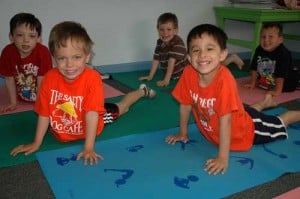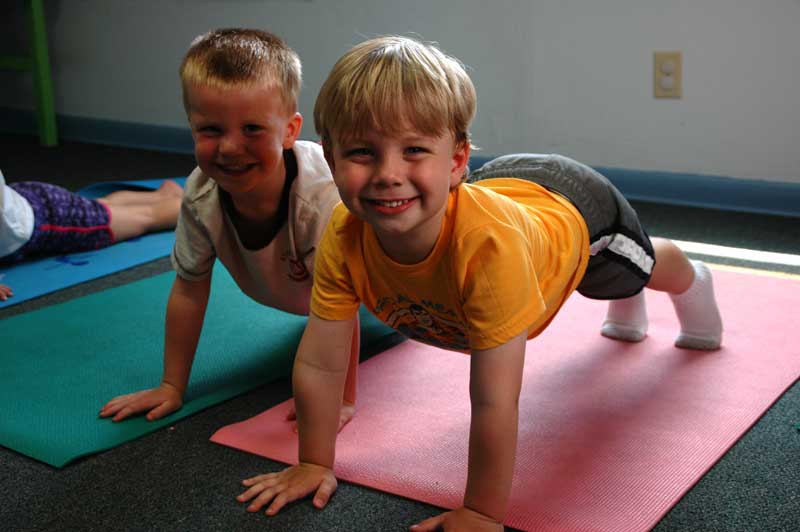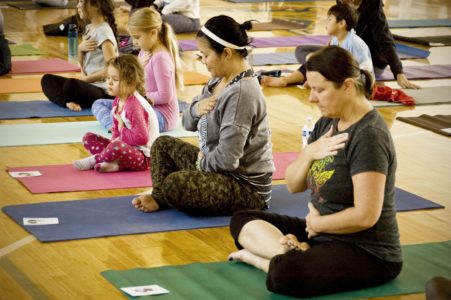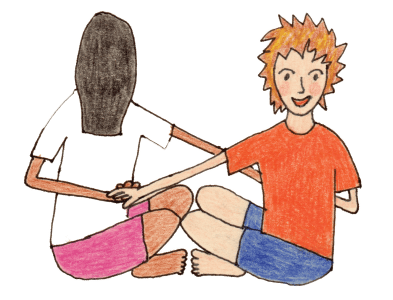Teaching Yoga Requires Flexibility
Why Flexibility Matters in Kids Yoga

It seems obvious that teaching yoga requires flexibility, right? You have to be physically able to do most poses to teach them and to have credibility as a teacher. You need to have flexibility in your lesson plans to be able to teach to the level of the students in your class. And, in my experience teaching children’s yoga, you need an additional level of flexibility. You need to help the parents feel comfortable.
Respecting Family Beliefs Without Losing the Yoga
I teach in several different locations, and most parents are thrilled to send their children to yoga. However, living in the South on a very conservative side of town, I run into parents who are concerned about the practice of yoga. On several occasions I have had to answer the common question, “is yoga a religion?” No joke, I have even been told that I practice yoga; therefore, I am going straight to Hell. Years ago, I had a lengthy phone discussion with DeAnna Smothers, co-founder of Yaweh Yoga, a Christian yoga studio and teaching academy.
She helped me to come up with a really great explanation of yoga for Christians. She pointed out that archaeological finds show a history of people doing yoga postures all the way back to 5000 BC. This means that yoga predates the development of today’s world religions. It is stated over and over in yogic texts that yoga is not a religion. It is a discipline. It is a system of postures, meditation, and self-awareness that isn’t practiced in the context of any faith. I share this thought with concerned parents and then invite them to come and take a class and judge it for themselves. Usually the ones who are afraid of it won’t participate, but I have had a few to come and change their minds.

I have been teaching at a Christian preschool for six years. When my director and I started talking about adding yoga as a special in the school, we decided to incorporate it in the weekly curriculum.
All of the children in the school come to my class for 20 minutes each week. For a few years I had no complaints because all the parents knew me well. My own children were still in the school so I interacted with them in and out of school. They trusted my judgment, and thought the idea was unique and fun. As a few years went by, new parents came into the school and I started getting complaints. I stuck to my definition of yoga never backing away from the basics of it. One thing that helps is that I have always offered an alternative to my class. If the parents don’t like yoga, their children can go to another class or have extra time on the playground. I don’t think that anyone should be forced to do yoga. It should be something done with love and a joyous heart. I have noticed that a respectful attitude made parents less suspicious of me and more comfortable with yoga itself even if they still refused to have their children do it. Often it boils down to a simple matter of the words we use. I omit chanting, and some years I say “Peace Be with You” instead of “Namaste”.

I have even experienced an anxious attitude towards yoga while teaching in a yoga studio. Parents who seek out the studio and pay money for their children to learn yoga will come in and say, “I want her to learn how to stretch, but can you leave out the yoga philosophy?” I always wonder if they mean not to talk about the Chakras for instance, or leave out spirituality all together. Teaching themes of opening your heart to new people or new experiences coupled with heart opening sequences is teaching yoga philosophy. I usually point out in Grounded Kids yoga we incorporate the themes taught in Dr. Seuss books, or books like the Wizard of Oz to teach universal truths while the kids flow through their poses. Once again, I invite those who question to come in and take the class along with their children so they will see what I do and feel comfortable with my themes and life lessons.
One time I took the Christian book, the Five Love Languages of Children by Gary Chapman and developed a class around it for one of my private students. I loved the theme that we all show and like to receive love in different ways. Chapman defines the Five Love Languages as Words of Affirmation, Acts of Service, Receiving Gifts, Quality Time, and Physical Touch. The student and I discussed what he thought his love language was, and what the love language of each member of his family was. We talked about how he could show them how he loved them in ways they needed to feel loved. We worked on all sorts of poses like Do Your Chores, Take out The Trash, Lean on Me and I’ve Got Your Back so he could work on these poses with his parents and sister. He recognized that Acts of Service and Quality Time were their love languages. Once again, a little flexibility helped me to combine stretching with a type of spirituality his parents could feel comfortable with. It was a hit because he keeps coming back to class.
Classroom-Ready Tips

My goal in teaching yoga to kids is always to reach out to my students in positive ways, and make them think deeply about their relationships with themselves and others. If I have to be creative to find ways to touch their hearts, I will do it without hesitation. Usually I end up learning something new in the process. When I hear stories from parents about how their 3 year olds tell them to take deep breaths when they get angry, or how they do sun salutations while warming up for their little soccer games, I realize how a little flexibility goes a long way.
By Holly Reese, Certified Grounded Kids Yoga Teacher
Resources to Help You Teach
Grounded Kids Lesson Plan Template







